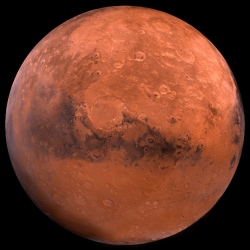
"I think we’re going to have strong indications of life beyond Earth within a decade, and I think we’re going to have definitive evidence within 20 to 30 years," NASA chief scientist Ellen Stofan said during a panel discussion that focused on efforts to search for habitable worlds.
"We know where to look. We know how to look," Stofan added during the event, which was webcast live. "In most cases we have the technology, and we’re on a path to implementing it. And so I think we’re definitely on the road."
Former astronaut John Grunsfeld, associate administrator for NASA’s Science Mission Directorate, shared Stofan’s optimism, predicting that signs of life will be found relatively soon both in our own solar system and beyond.
"I think we’re one generation away in our solar system, whether it’s on an icy moon or on Mars, and one generation [away] on a planet around a nearby star," Grunsfeld said during Tuesday’s event.
Recent discoveries suggest that the solar system and broader Milky Way galaxy teem with environments that could support life as we know it, Grunsfeld said. For example, oceans of liquid water slosh beneath the icy shells of the Jupiter moons Europa and Ganymede, as well as that of the Saturn satellite Enceladus. Oceans covered much of Mars in the ancient past, and seasonal dark streaks observed on the Red Planet’s surface today may be caused by salty flowing water.
Further, NASA’s Curiosity rover has found carbon-containing organic molecules and "fixed" nitrogen, basic ingredients necessary for Earth-like life, on the Martian surface. Farther afield, observations by NASA’s Kepler space telescope suggest that nearly every star in the sky hosts planets, and many of these worlds may be habitable. Indeed, Kepler’s work has shown that rocky worlds like Earth and Mars are probably more common throughout the galaxy than gas giants such as Saturn and Jupiter.
